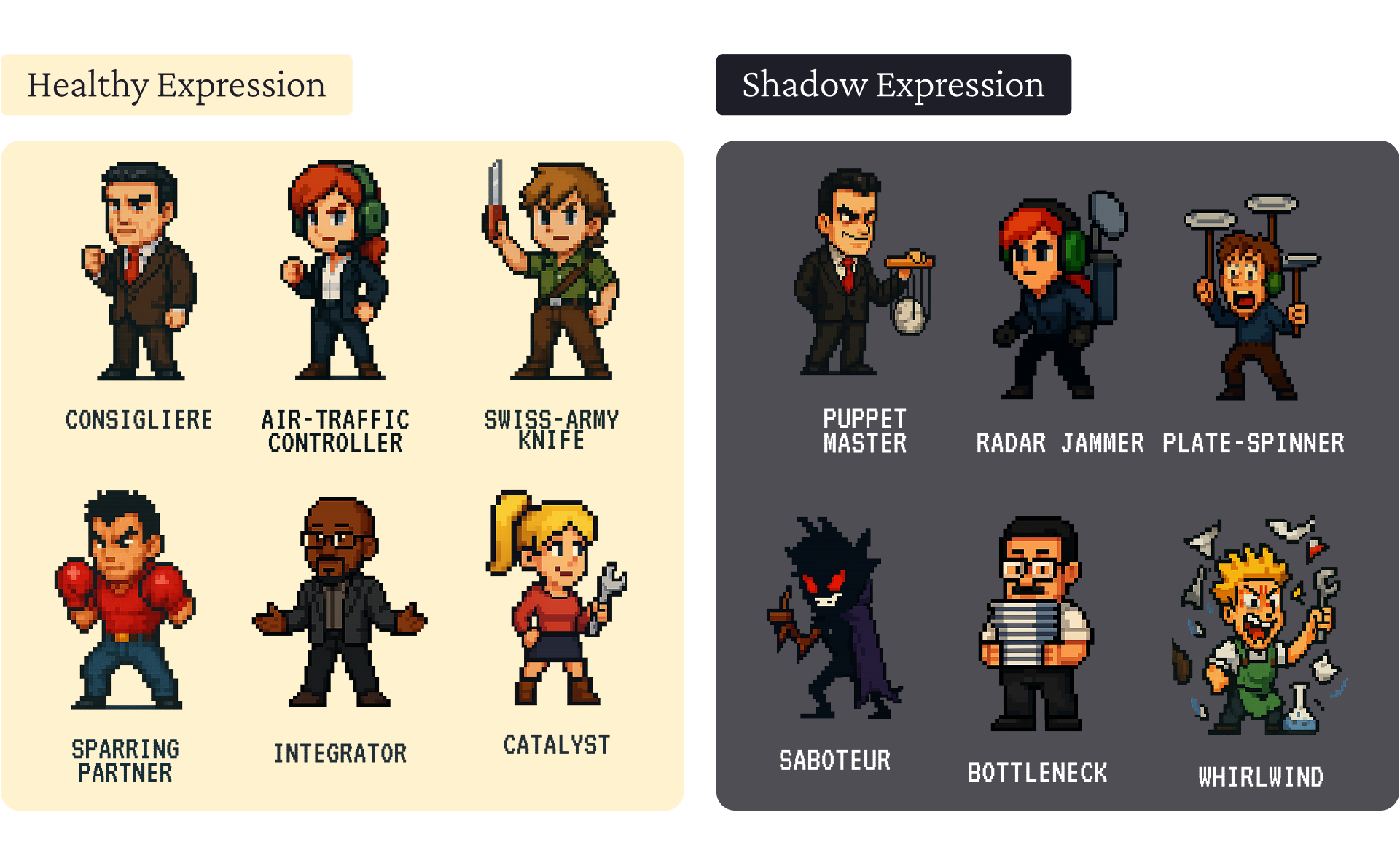The well-run company of tomorrow will not look like the well-run company of today. The invention of sophisticated and rapidly-improving artificial intelligence systems compels us to rethink the operations of companies from the ground up, looking for ways to drive productivity, efficiency, and rapid growth.
Imagine a company where the sales team is able to identify the perfect prospects, get in front of each of them with collateral customized specifically for them, and use their responses over email and Zoom to identify and overcome objections based on what AI systems have learned from thousands of similar conversations.
Or, imagine a company where a legal team is able to turn around contract reviews in minutes instead of days, instantly checking for conflicts with other contracts and company policies, and quantifying the risks for executives.
Finally, imagine a company where finding information doesn’t take dozens of Slack messages and figuring out company policies doesn’t require navigating through an enormous and confusing wiki, but instead information is surfaced proactively, right when you need it, making everyone more aligned and capable of working faster.
Whose job is it to create this future for your company? CEOs are too busy, department leaders are too siloed, and most internal ops people don’t have the strategic purview to find and fix the hardest problems. In many ways, the Chief of Staff is best positioned to take the lead.
How Companies Can Use AI to Drive Operational Excellence
Every week, it seems like new use cases come out for AI systems. However, increasing efficiency is perhaps the most obvious use case. Customer service platforms like Kustomer, Intercom, and Zendesk tout their AI capabilities, claiming that they can automate routine processes, reduce wait times, and generate useful insights. Similarly, companies like Harvey, Onit, and Knowable drive efficiency in legal workflows by analyzing contracts and allowing for more streamlined management of legal materials.
The impact of these systems is likely to continue to grow. Companies may be able to accomplish more without growing their teams, or even reduce the size of their teams while operating more quickly and accurately. Similarly, they may be able to offer new features to their customers to drive growth. These changes have significant implications for companies, and the Chief of Staff can help assess and manage through them.

The Paradigm Shift: Why Chiefs of Staff are Well-Positioned
Anyone who has tried to implement a new system or transform a key process at a company will tell you that it’s easier to think up these changes than to actually get them done. However, when someone can overcome institutional inertia, great things get done.
Chiefs of Staff are well-positioned to overcome many of these challenges. Assuming the CoS has a strong existing relationship with their principal, executive sponsorship of AI implementation initiatives should be a given. Chiefs of Staff will also have a strong view into the cross-functional impacts of AI given their unique vantage point, allowing them to account for possible issues earlier in the process and avoid roadblocks. Finally, the Chief of Staff should be able to use the relationships they have built with executives and their teammates throughout the organization to get broad-based buy-in to these initiatives.
How to Identify Opportunities and Implement AI-Based Solutions

So if you’re a Chief of Staff who wants to own this type of work, how can you get started? Here’s an outline of the steps you can take to identify opportunities and get the ball rolling:
- Talk to your principal: It’s important to first gauge the level of buy-in that your principal has to the concept of implementing AI throughout the organization. Many CEOs are likely eager to incorporate these systems, but lack the time to do it themselves.
Presenting yourself as a cross-functional leader who can do this for them may make their eyes light up. However, if you sense that there may be some pushback, it can be best to identify the opportunities first and come to your principal with specific ideas for initiatives, rather than a general desire to transform the company with AI.
- Identify problems and opportunities: First make a list of all of the inefficient processes, missed metrics, organizational hangups, or other problems that you’ve observed in your time as Chief of Staff. Then, go on a listening tour through different departments to see what issues your colleagues may have noticed. You’ll likely come back with a mile-long list of problems to tackle.
- Frame the ideal solution: Paint a picture of what the ideal outcome would look like if the problems were solved or the opportunities fully exploited. Pressure-test these ideas (quietly) with relevant stakeholders.
- Survey the market for AI systems: Begin vendor selection on systems that could address the problems and opportunities that you’ve pressure tested. Work to understand the technology, use cases, customer reviews, pricing, time to implementation, and any other information that you can glean.
- Create your plan: For the first initiative that you’ve identified, write a memo or build a short deck outlining the problem, the solution, how you’ve pressure tested it, the best systems you’ve found, and what implementation is likely to look like. Make sure to emphasize the metrics you’d track and the level of success you’d be targeting.
- Get buy-in: Work with your principal and the affected stakeholders to get people on board with your plan. This may be the step that takes the longest.
- Execute: easier said than done!
- Measure and report: Track the progress you’ve made and create an after-action report on how the initiative performed versus your plans. Make sure to communicate your success effectively to give you credibility for your next initiative.
Objections that You’re Likely to Encounter
The Chief of Staff may face pushback from various parts of the organization in taking on this new responsibility. Broadly, these are likely to fall into three main categories:
- Why now?
If you encounter pushback from teammates asking why it’s vital to pursue these initiatives now, work to help them understand the cost of the current problem or unexploited opportunity as well as the great outcomes that await on the other side of pursuing this initiative. Make sure they understand your rationale and the urgency. - Why you?
AI is a hot topic, and people may wonder why you’re the right person to lead the company in these initiatives. Put your coalition-building skills to good use and work to get them on your team so they see your success as their success. They may object that you don’t have technical expertise in AI systems. If that’s true, you’ll need to do more legwork upfront to show that you have a grasp of the technical aspects of the systems or have consulted appropriately with more technical members of your team. - Why not me?
This objection is most likely to come from a department head or someone who works in a department you’re impacting with the initiative. Hopefully, you’ve done the work to get your principal on your side, as well as including internal subject matter experts in your scoping efforts. Ultimately, you’ll probably be most likely to succeed if you frame the initiative as a win-win - helping the department head meet their targets without requiring substantial resources from their team.
Don’t be surprised if your initiatives are not universally popular at the outset; by showing positive results, you’ll eventually win people over to your side while doing the right thing for the company.
Accelerate Your Chief of Staff Career Path by Taking On These Initiatives
A Chief of Staff’s first day in the role starts a countdown for them to figure out what they’re going to do next. Taking a leadership role in driving AI initiatives at their company allows them to set themselves up well for success in the role and for whatever comes next.
By establishing themselves as an expert on this rapidly-growing space, Chiefs of Staff can prove that they are indispensable to the organization, mitigating the risk that their role is seen as a nice-to-have in this uncertain economy.
Importantly, it also provides an opportunity to own a project (or several projects) end-to-end, a key step as they progress up the ladder outlined in the Chief of Staff Leveling Framework.
And when you’re ready to move on from the role, our Chief of Staff Pathways Report shows that there are a few common exit paths for someone in the role. Establishing expertise in AI opens up each of those paths further:
- Staying at the company in a leadership role: Helping executives at a company implement AI systems involves identifying current problems, understanding potential solutions, and building the social capital to get them done. Once complete, a Chief of Staff can hop to the next problem, stay to lead the initiative, or amass a portfolio of workstreams across the organization that they are in charge of, any of which can set them up well to ascend to a functional leadership position at the company.
- Transitioning to a new company in a leadership role: Chiefs of Staff can highlight the positive results they drove in AI-related initiatives to build the case for their candidacy for a leadership role at another company.
- Transition to a Chief of Staff role at a new company: If you’re an experienced Chief of Staff looking to transition to a similar role at a new company, what better way to show the immediate impact you can deliver than referencing the results you drove by identifying problems and solving them using emerging technology?
- Start their own company: The essential ingredients for a successful startup are a deep understanding of the problem and a fluency with the technology needed to solve it. That sounds exactly like the exercise a Chief of Staff will go through when selecting and implementing AI solutions within their current company. Taking on this role can open up a world of new ideas (AI-related or otherwise) and give a Chief of Staff the knowledge and credibility they need to strike out on their own.
How You Can Begin Today
If you want to get started on this type of work, begin by talking to your principal or by proactively uncovering problems and opportunities that AI could address. While there’s probably nobody at your company today who is tasked with driving broad exploration and adoption of AI systems, this white space won’t exist forever. If you follow the steps in the section above “How to Identify Opportunities and Implement AI-Based Solutions”, you’ll be well on your way to having the impact that you desire.
Lots to Explore From Here…
In the era of AI, companies must move faster and smarter to exploit the opportunities in front of them. Chiefs of Staff are perfectly positioned to lead the charge, with the strategic insight, deep relationships with the executive team, and operational chops to see complex projects to completion.
This opportunity heralds a transformation of the role of Chief of Staff, extending the role’s responsibilities and impact, ensuring CoS have a seat at the table for years to come. Here at the Chief of Staff Network, we intend to continue to explore this transformation, looking at some of the following topics:
- How our members are using AI to give themselves and their CEOs leverage
- How our members’ companies are implementing AI systems today, and what changes they want to make
- The impact on organizational structures and team dynamics in companies that implement AI systems
- The challenges of implementing AI systems effectively, and the negative impacts that can occur in downside scenarios
- Our members’ attitudes, informed by their companies’ experiences, on the promise and peril of AI
- And much more…
If you want to join the discussion, join the Chief of Staff Network or email our General Manager Rahul with your thoughts.







.avif)
.avif)

.avif)






